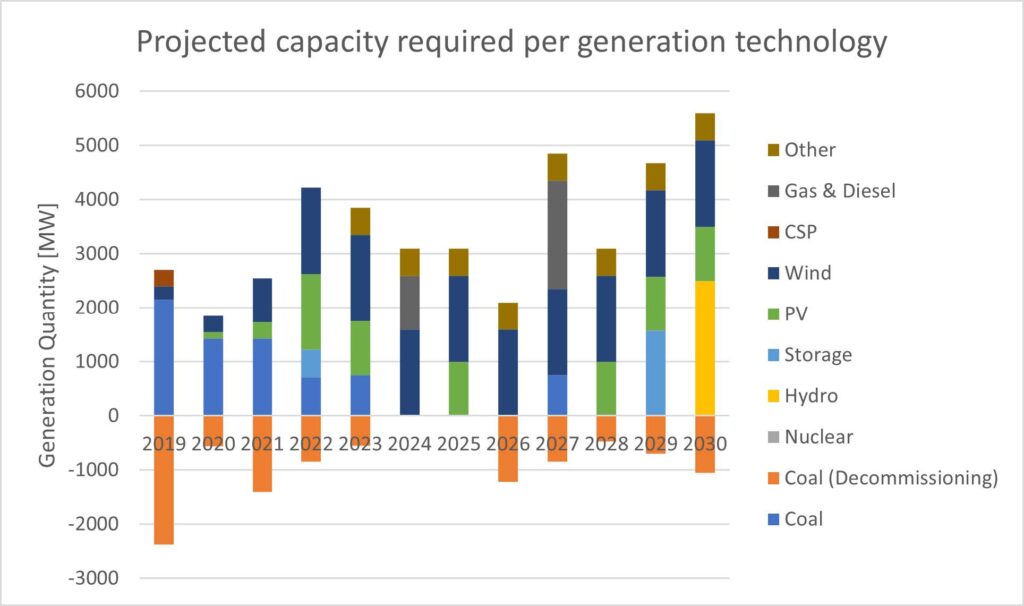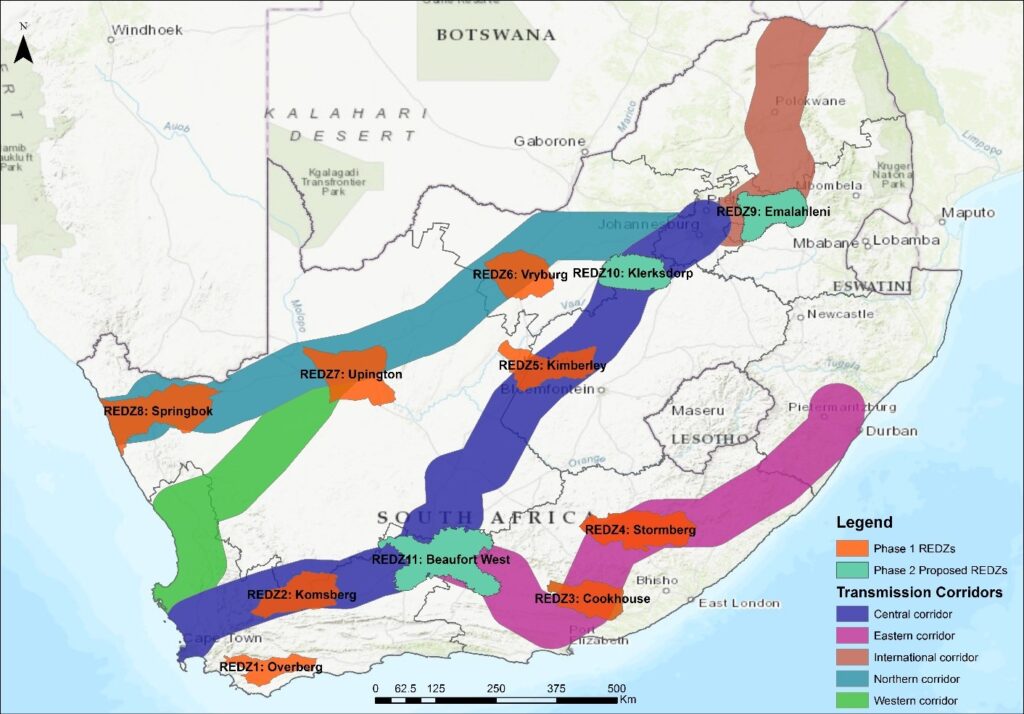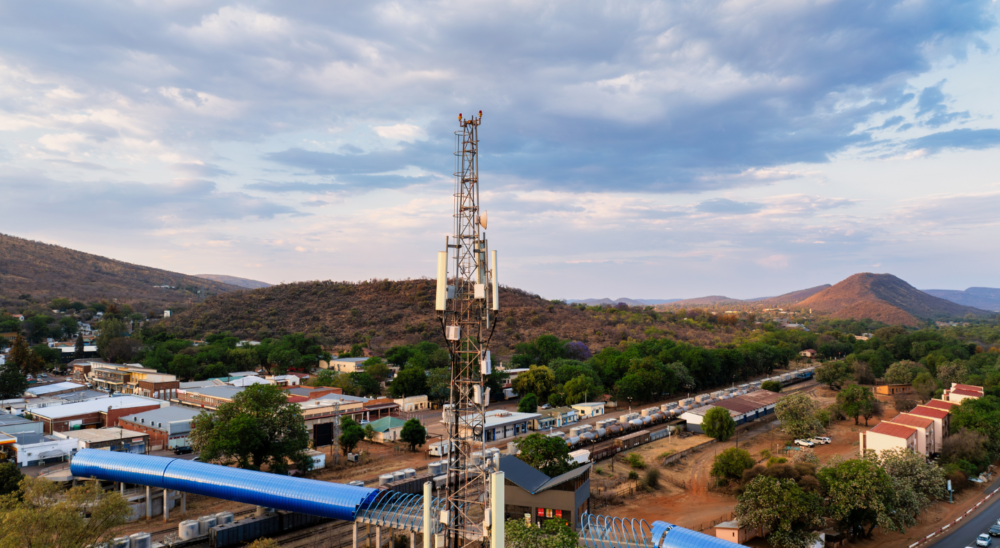The Integrated Resource Plan (IRP) is a ministerial roadmap that outlines the expected national demand and a recommended mix of generation methods. It aims to keep costs low and ensure reliable service and lower emissions. This plan offers guidance on the generation types the country should install and the timeline for doing so. A core strategy is a focus on solar photovoltaic (PV) and wind facilities. The IRP sets firm targets for adding large amounts of these variable renewable energy (VRE) technologies. This approach indicates the government’s intent to provide electricity at reduced cost while meeting climate commitments.
The IRP’s targets are ambitious: 1.6 gigawatts of wind power each year from 2022 to 2030, plus one gigawatt of solar PV for most years in that window. This leads to 26 gigawatts of new wind and solar capacity by 2030, with an additional 14 gigawatts from other generation methods. Some observers wonder about actual progress. In 2023, South Africa reached six gigawatts of VRE capacity, which is below the 8.2 gigawatts suggested in the IRP. Still, the plan remains a reference for national decision-makers seeking cost-friendly and cleaner electricity. The annual schedules help illustrate how the energy mix could shift to serve development objectives.

Figure 1: Suggested annual increases in installed generation capacity per technology according to the 2019 IRP
REDZ and Grid Strain
Various focus areas, known as Renewable Energy Development Zones (REDZs), have been designated for wind and solar construction. They were selected through a process that considered technical, environmental, and social factors. Planners studied how solar and wind resources vary across provinces, how the grid can move energy from new sites to demand centres, and where social investment is needed. Several zones are in the Northern, Eastern, and Western Cape provinces. An important observation is that many of these zones overlap with grid regions with limited capacity to accept new generations.
Eskom publishes estimates of the extra generation that each control zone can manage. This figure is called generation connection capacity and reflects that area’s thermal, stability, and operating limits. Some provinces still have room for new generators, but others appear nearly full. Adding new transmission lines in southern regions requires a long planning phase and significant funding, with at least five years before they might operate. Delays from budget shortages and local resistance extend that timeframe further. Many wonder if raising hosting capacity within two or three years is possible. That strategy may help South Africa stay on track with climate goals.

Figure 2: A map of South Africa showing the location of REDZs as well as the main transmission corridors in the country
Probabilistic vs Deterministic Load Flow
Hosting capacity is the maximum level of generation that can be accepted at a node without risking damage to equipment or affecting reliability. Deterministic methods, a common approach, analyse the most stressful conditions and use that single scenario to set a safe limit. This can be very conservative when large amounts of wind or solar are involved. Probabilistic methods, by contrast, study a range of outcomes rather than a single worst-case. Research indicates that a broader review of possible scenarios may help operators make better use of existing infrastructure and refine the risks linked to high VRE penetration. This could avoid unneeded and expensive upgrades while still maintaining reliable service.
Johannes de Bruyn’s research, supervised by Professor Bernard Bekker, explores whether a simplified probabilistic load flow technique might offer a clearer picture of hosting constraints than a deterministic approach. He aims to see how these methods differ, where probabilistic techniques have succeeded, how to shrink large systems without creating large errors, how much faster those compact models can run, and whether real examples confirm the value of probabilistic methods.
His investigation centres on the Northern Cape, given its significant solar resource and the presence of sites that faced rejections on hosting capacity grounds. By testing deterministic and probabilistic tools in that region, he hopes to reveal results that differ from current practice. The work uses an existing power system model, though the model’s accuracy varies at certain substations. This means any findings primarily show how the modelling techniques compare rather than reflect the state of the actual network.
Final Thoughts
The research reviews probabilistic load flow in depth, contrasts it with deterministic ideas, examines ways to condense a grid model, and applies that method to the Northern Cape. In doing so, it illustrates how probabilistic approaches might reveal hosting limits that match real operating patterns more closely. That may allow greater use of existing transmission assets and still highlight where expansions are unavoidable.
The outcomes offer a tool that could bridge the gap between IRP goals and practical constraints. By relying on recognised data and established parameters, this work provides a path for decision-makers to see how much new generation the grid might handle while preserving safety and reliability.
Download and read the complete research: https://scholar.sun.ac.za/items/a86eba94-4d88-4462-bcf0-28a65b0a5490





